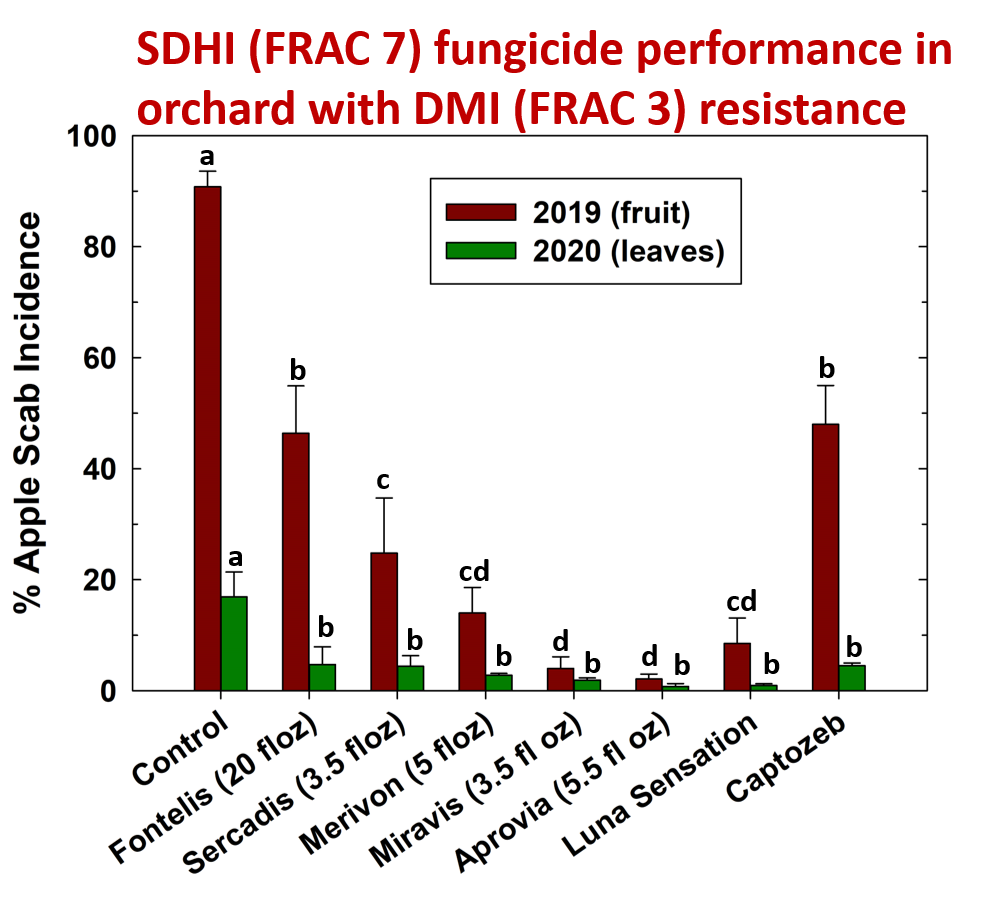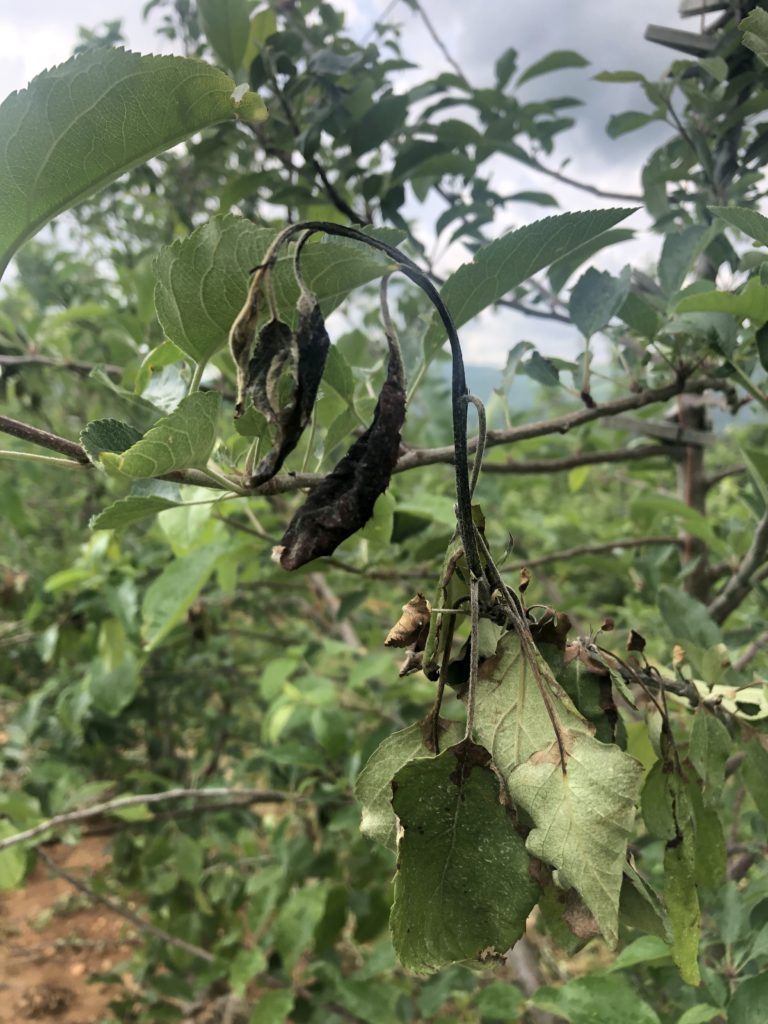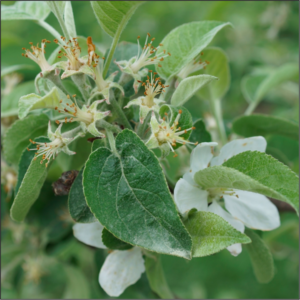2021 Apple Disease Update: Petal Fall
go.ncsu.edu/readext?791385
en Español / em Português
El inglés es el idioma de control de esta página. En la medida en que haya algún conflicto entre la traducción al inglés y la traducción, el inglés prevalece.
Al hacer clic en el enlace de traducción se activa un servicio de traducción gratuito para convertir la página al español. Al igual que con cualquier traducción por Internet, la conversión no es sensible al contexto y puede que no traduzca el texto en su significado original. NC State Extension no garantiza la exactitud del texto traducido. Por favor, tenga en cuenta que algunas aplicaciones y/o servicios pueden no funcionar como se espera cuando se traducen.
Português
Inglês é o idioma de controle desta página. Na medida que haja algum conflito entre o texto original em Inglês e a tradução, o Inglês prevalece.
Ao clicar no link de tradução, um serviço gratuito de tradução será ativado para converter a página para o Português. Como em qualquer tradução pela internet, a conversão não é sensivel ao contexto e pode não ocorrer a tradução para o significado orginal. O serviço de Extensão da Carolina do Norte (NC State Extension) não garante a exatidão do texto traduzido. Por favor, observe que algumas funções ou serviços podem não funcionar como esperado após a tradução.
English
English is the controlling language of this page. To the extent there is any conflict between the English text and the translation, English controls.
Clicking on the translation link activates a free translation service to convert the page to Spanish. As with any Internet translation, the conversion is not context-sensitive and may not translate the text to its original meaning. NC State Extension does not guarantee the accuracy of the translated text. Please note that some applications and/or services may not function as expected when translated.
Collapse ▲On most cultivars in Western NC, petal fall is quickly approaching or has come and gone without too much disease concerns to this point. In the south, petal fall is normally the time we begin the transition from intensive “early season” disease management to intensive “summer disease” management programs. However, given the cool and relatively dry weather throughout much of April, I’d strongly encourage you to continue to focus on early season diseases-in particular apple scab. Similarly to this time last year, there have only been 7 primary scab infection events so far in 2021. Unlike recent years in which ascospores (overwintering spores that cause the primary or initial infections) have fully matured and have been released by the petal fall stage, there are still ascospores that will be released during the next daytime rain (rainfall greater than 0.1 inch). This next rainfall, is predicted for April 23, so you still have a few days to take action!
There are several fungicide options for managing apple scab, including, but not limited to mancozeb + captan (applied at half rates), the FRAC 3 (DMI) fungicides such as Inspire Super or Cevya, single active ingredient FRAC 7 (SDHI) fungicides such as Aprovia, Miravis, Excalia, and Fontelis, FRAC 11 (strobilurin) fungicides such as Flint Extra and Sovran, and several pre-mix options that contain two active ingredients (e.g. Merivon, Luna Sensation, Luna Tranquility). Certainly what you decide to apply depends on several factors including resistance history, budget, and pressure from other diseases. Here are some of my tips based on observations from our research:
- Always tank mix a single site fungicide with a half rate of captan or mancozeb. In North Carolina, I’d advise using mancozeb at the 3 lb/A rate until the 77 day PHI or until you’ve applied the seasonal application limit of 21 lbs at this rate (whichever comes first)
- Inspire Super and Cevya have higher intrinsic activity against apple scab compared to other FRAC 3 fungicides with the same mode of action such as Rally 40WSP, Procure, Topguard, and Indar 2F. In orchards with resistance to the latter fungicides, Cevya and Inspire Super can still provide a high level of control, particularly when tank mixed with a half rate of mancozeb or captan.
- Although the strobilurins (FRAC 11) and premixed products containing a strobilurin (e.g. Merivon; Luna Sensation) also have high efficacy against scab, I’d save them for Glomerella leaf spot and bitter rot control.
- In general, SDHI fungicides are highly efficacious against apple scab. In our field trials, Aprovia and Miravis have provided the greatest reduction of leaf and fruit scab. (see below)





